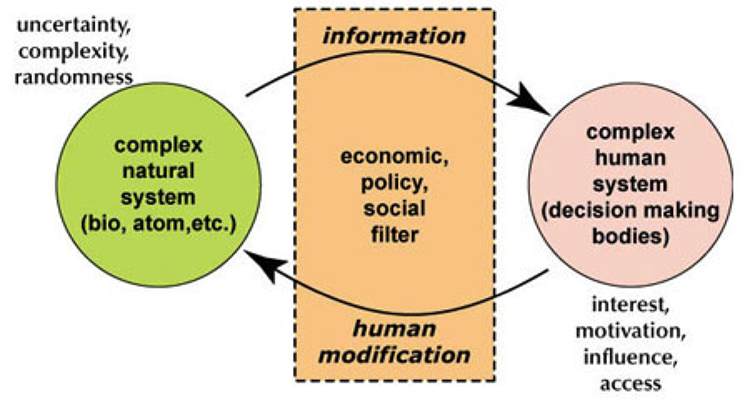Modeling Costs and Benefits for Coupled Human-Environment Systems
Computer models are an essential tool for studying costs and benefits. Physical models of the ocean and shoreline can be used to study how protective structures such as sea walls and levees can reshape the coastline by changing currents, waves, and erosion. From the outputs of these models, scientists can calculate costs and benefits in terms of losses or gains in coastal property, in amenities such as beaches, or in habitat. Economic or demographic models can then be used to study how these changes in coastal processes, landforms, and ecosystems may interact with the local economy or population trends, potentially resulting in additional costs or benefits (such as increasing poverty or growing the tax base). Urban planning and design models can assess the effects of these changes in the physical and social environment on urban spaces, including changes in traffic patterns on city streets or in sight lines (views) from scenic coastal hotels or parks.

As these examples suggest, human and environmental systems in the coastal zone are closely coupled: human actions reshape the natural environment, and changes in the natural environment reshape human communities and infrastructure. Therefore, to understand the costs or benefits of a proposed strategy for preparing for sea level rise and related hazards, scientists and decision-makers should consider these complex, reciprocal interactions between human and environmental processes. Because computer models are able to capture these complex interactions, they are often one of the best tools for understanding the costs and benefits that these interactions may cause. Models may be particularly useful when attempting to understand whether combining two or more sea level rise strategies will change the human-environment system in ways that lead to unexpected costs or synergistic benefits. The next section considers some of the possible benefits of combining strategies. Fittingly, coming near the end of the course, this is one of the most advanced views of the Earth System we have had this semester.
